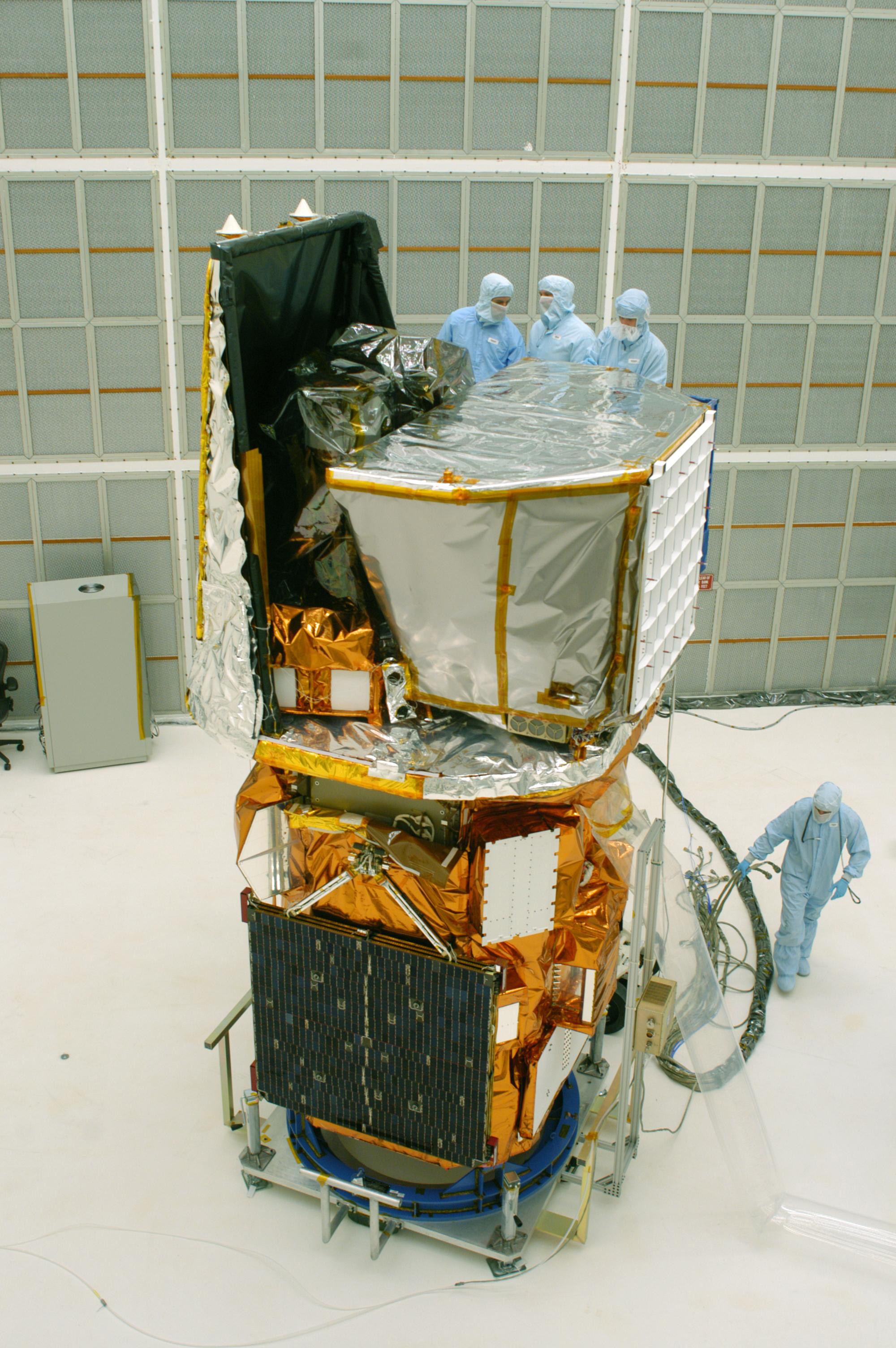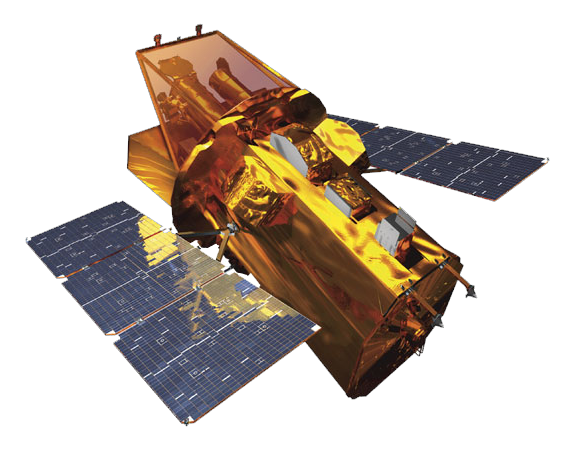Swift Observatory

The Swift spacecraft in a hangar at Cape Canaveral Air Force Station. Spectrum Astro workers look at the final pieces of protective cover on the Swift spacecraft that must be removed. (Credit: NASA)
Swift's three instruments work together to glean as much information about each burst as possible. Swift's multiwavelength observations of GRBs and afterglow are completely simultaneous. The XRT and UVOT have co-aligned fields-of-view, both within the BAT field-of-view, so that any source can be observed in all three wavebands.
When a GRB occurs, the BAT will be the first of Swift's instruments to detect it. Within about 10 seconds of the burst trigger, the BAT produces a burst localization, which is transmitted to ground observers. In addition, the BAT's position is fed to the Swift spacecraft so a slew can be performed, bringing the GRB into the XRT and UVOT's fields-of-view.
Within about 60 seconds of a burst trigger, the XRT refines the BAT position. The UVOT produces an even-more accurate localization within about 200 seconds of the burst trigger. During all of this, the BAT continues observing the GRB to obtain a picture of how the gamma-ray emission evolves over time. X-ray spectra are distributed to the community after about 1200 seconds (20 minutes), and the UVOT filters complete their cycles after about 7200 seconds (2 hours). Together, these observations provide a clear picture of the GRB and its afterglow over time in three distinct wavebands.
While not engaged in observations of a new GRB, Swift's telescopes perform preprogrammed observations, which include long-term follow-up of GRBs as well as other science.

Computer rendering of the Swift satellite. (Credit: NASA E/PO, Sonoma State University, Aurore Simonnet)


